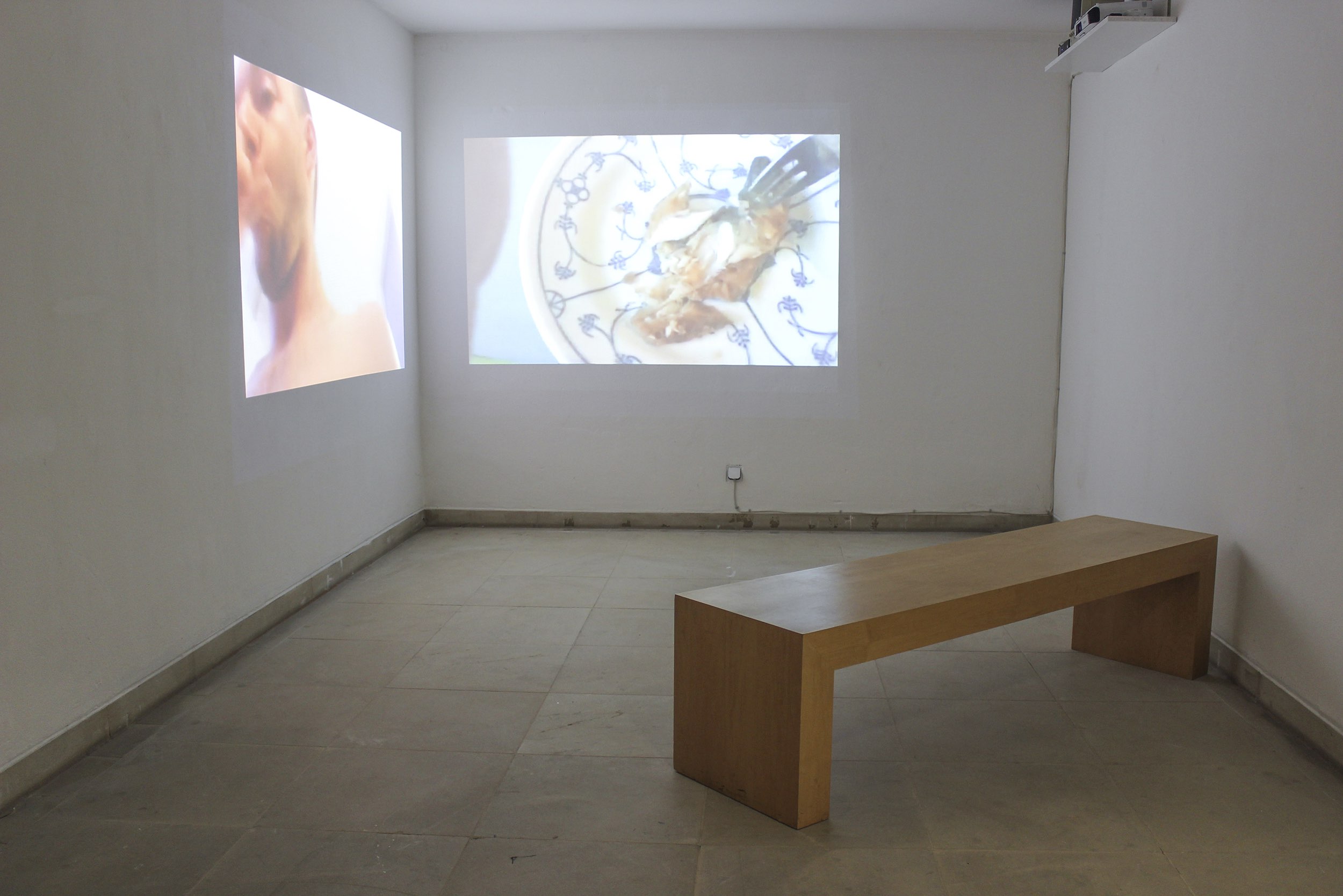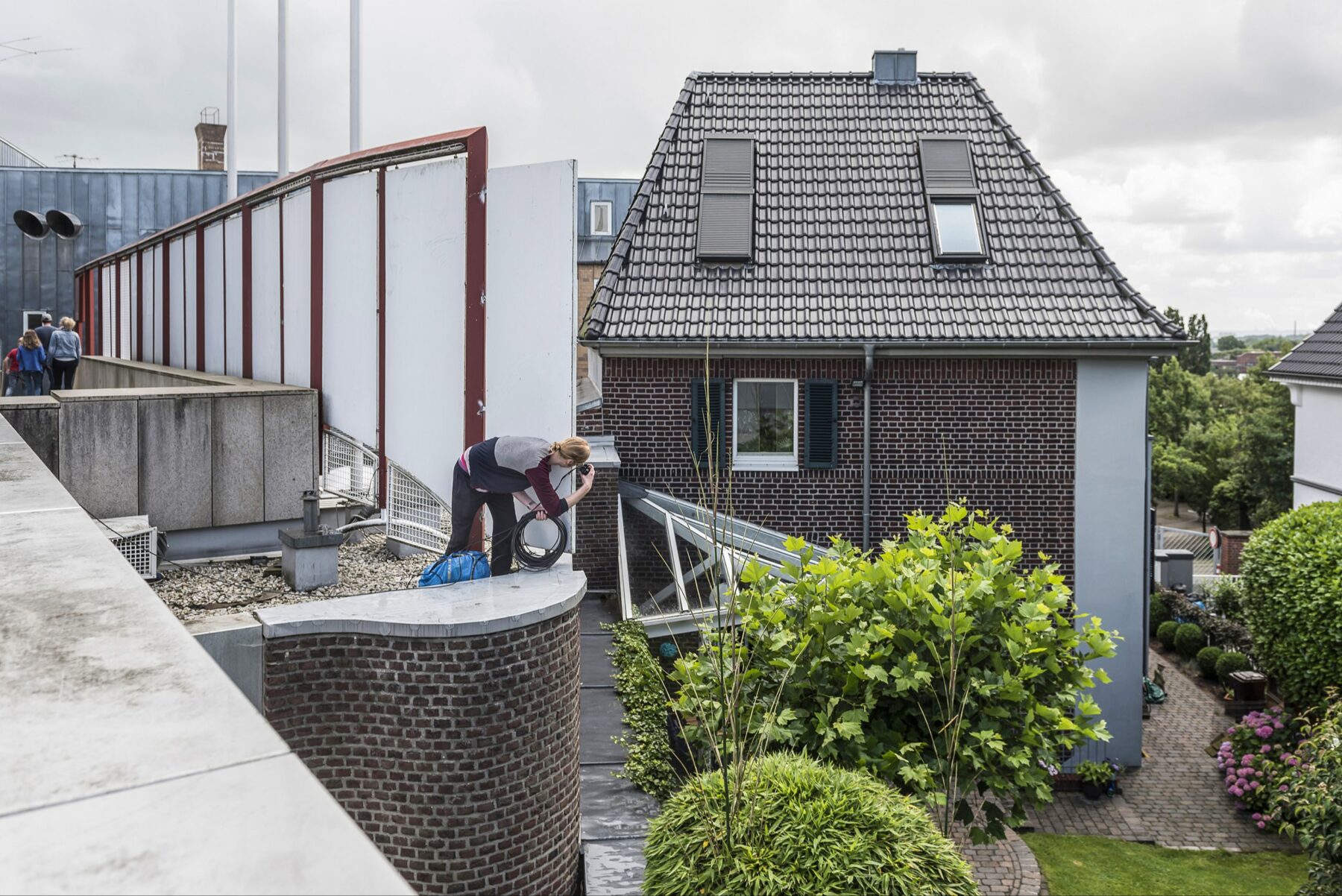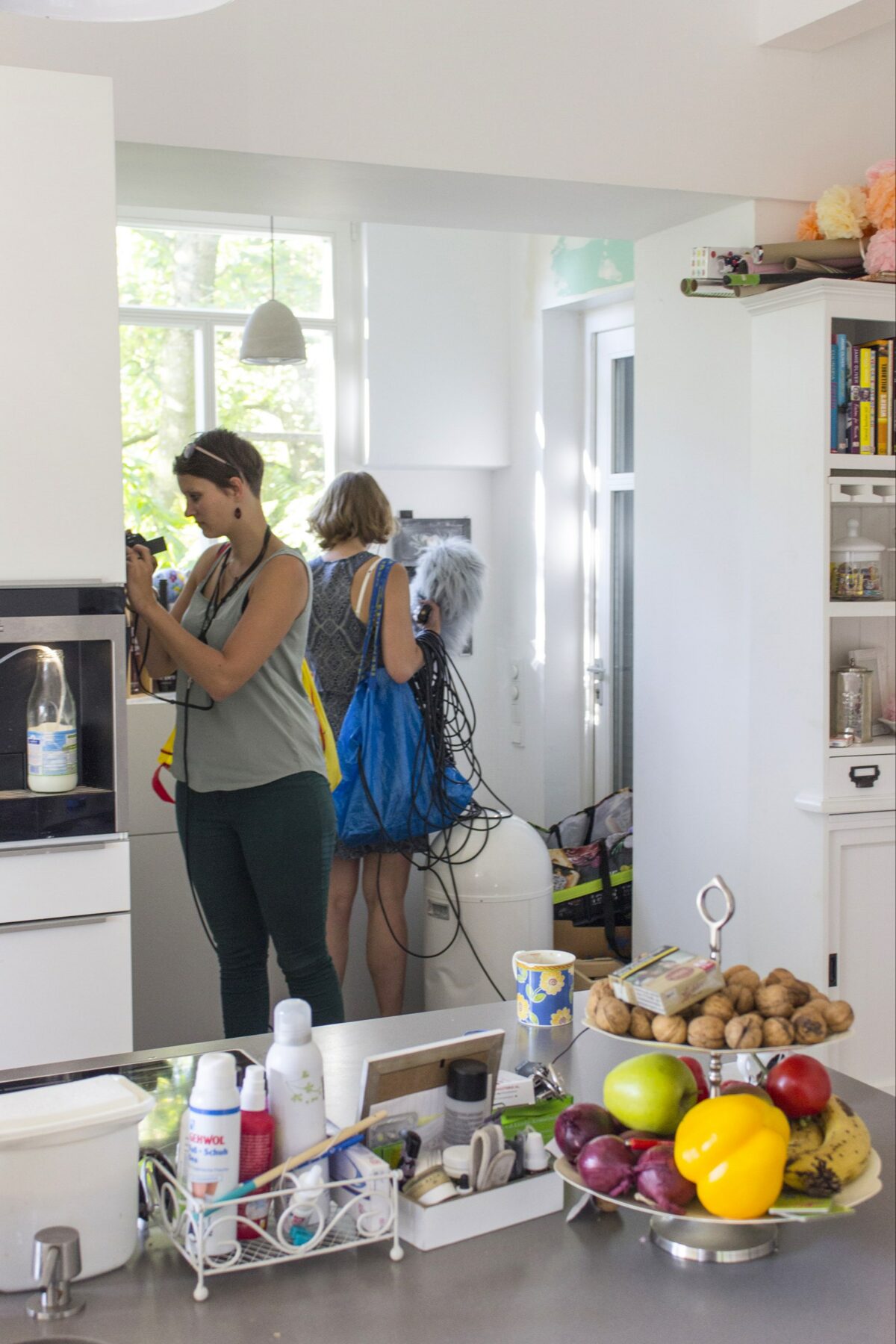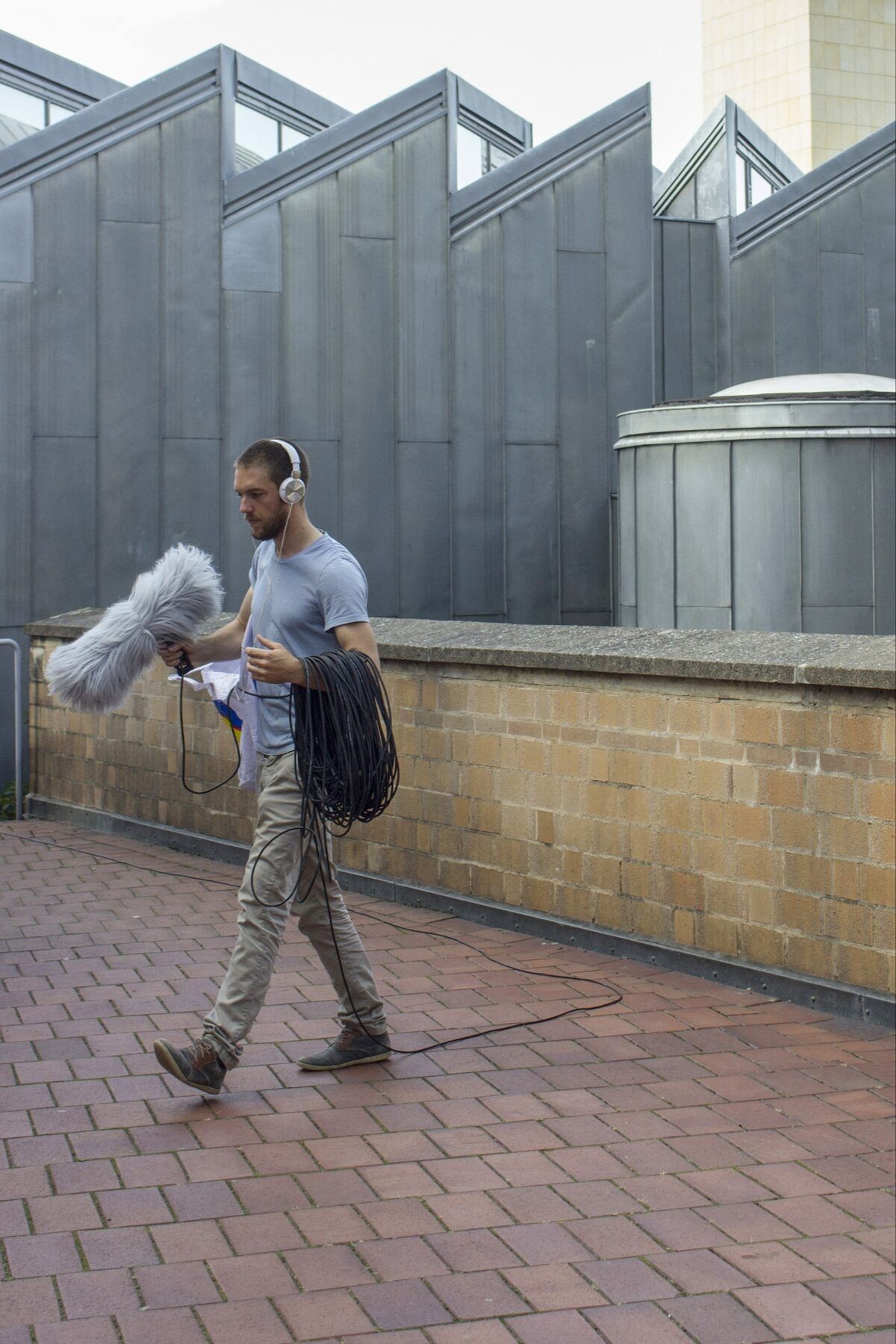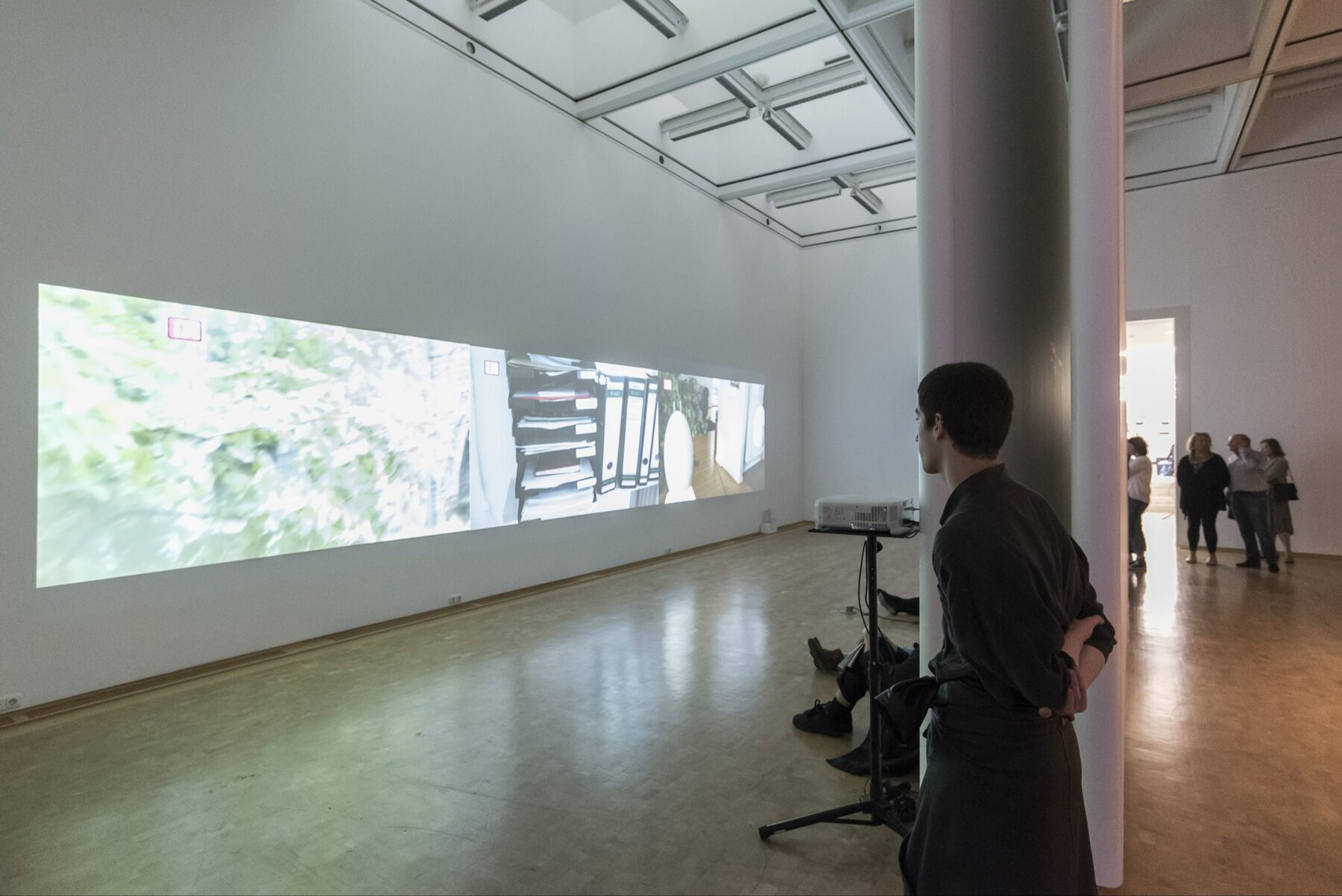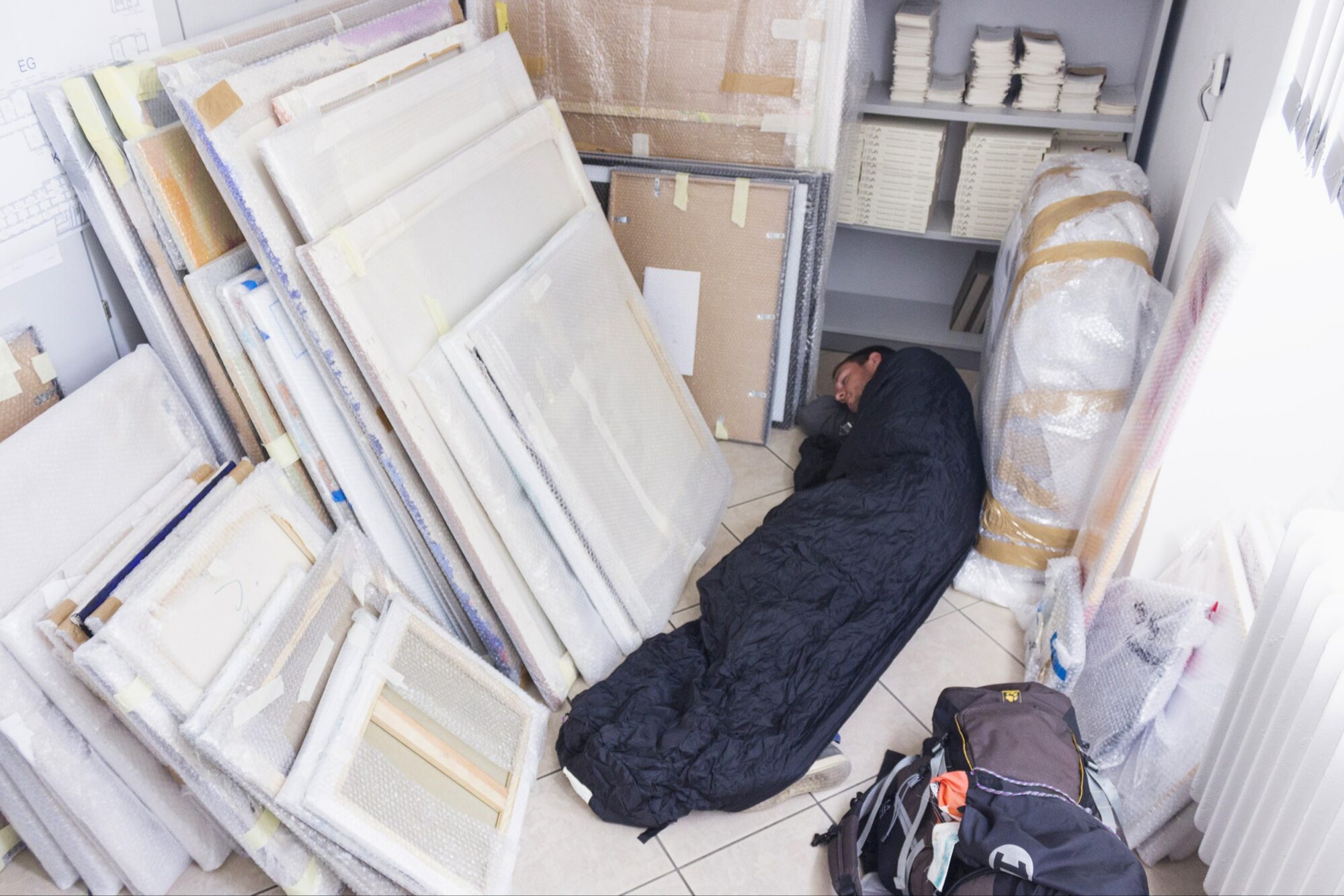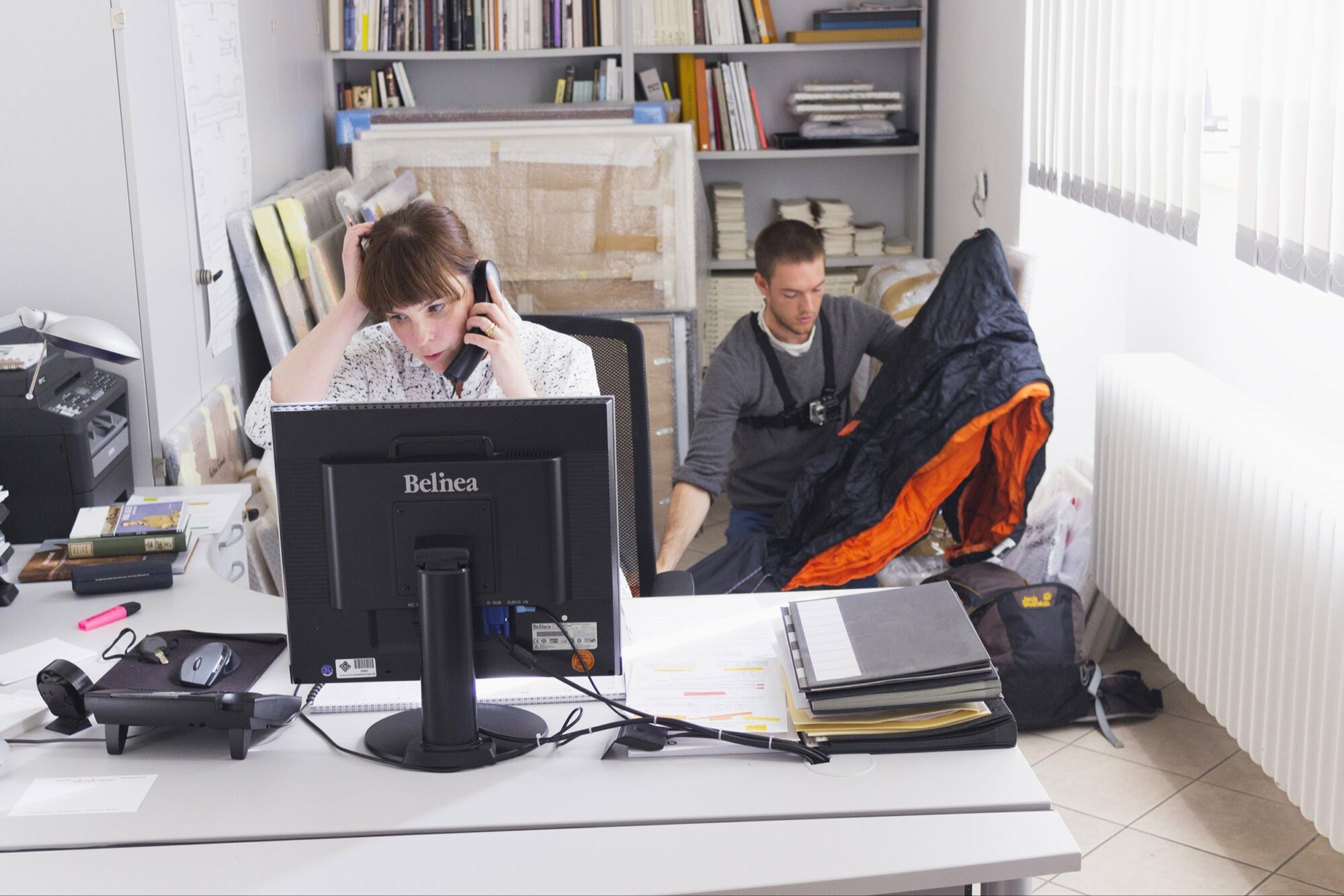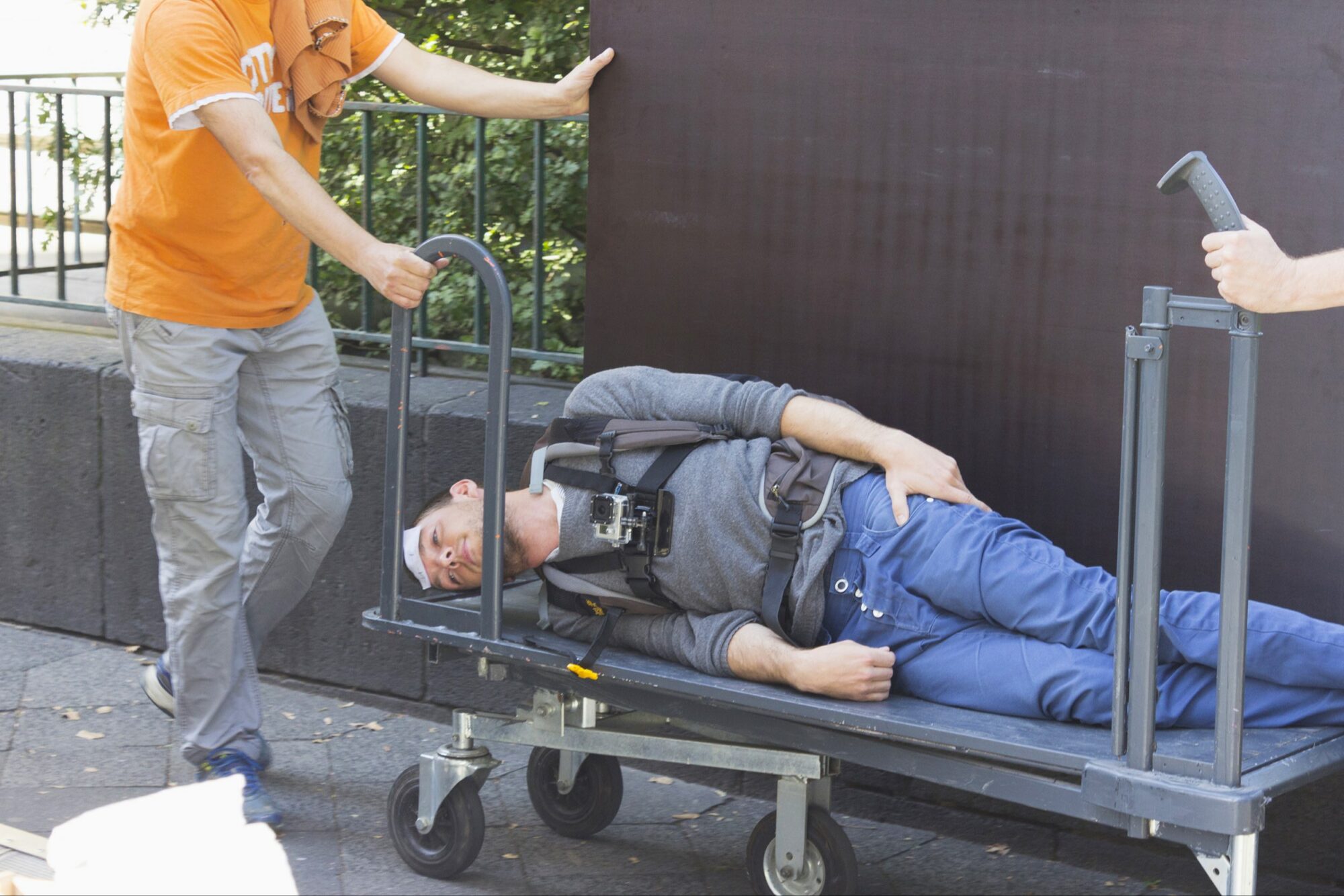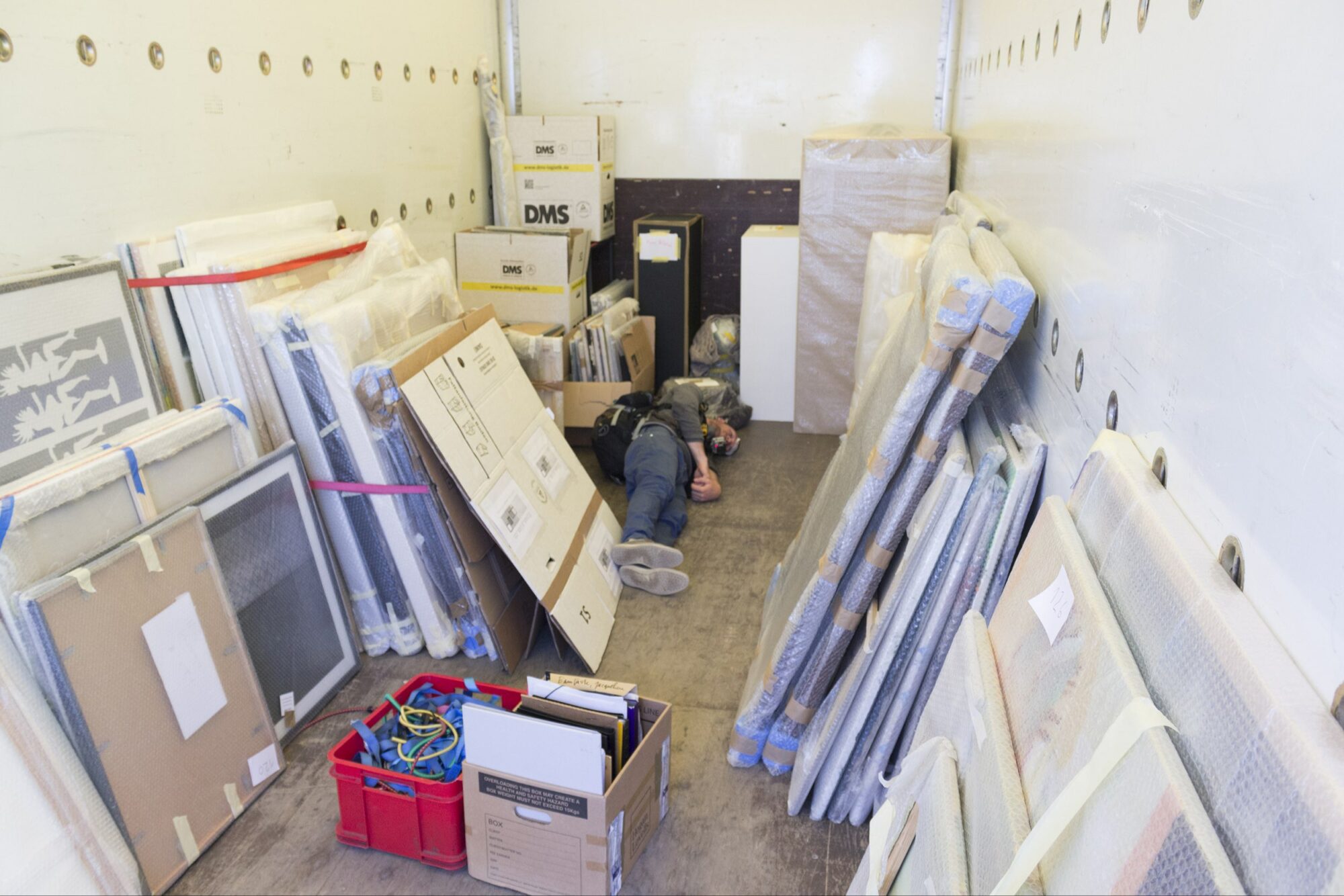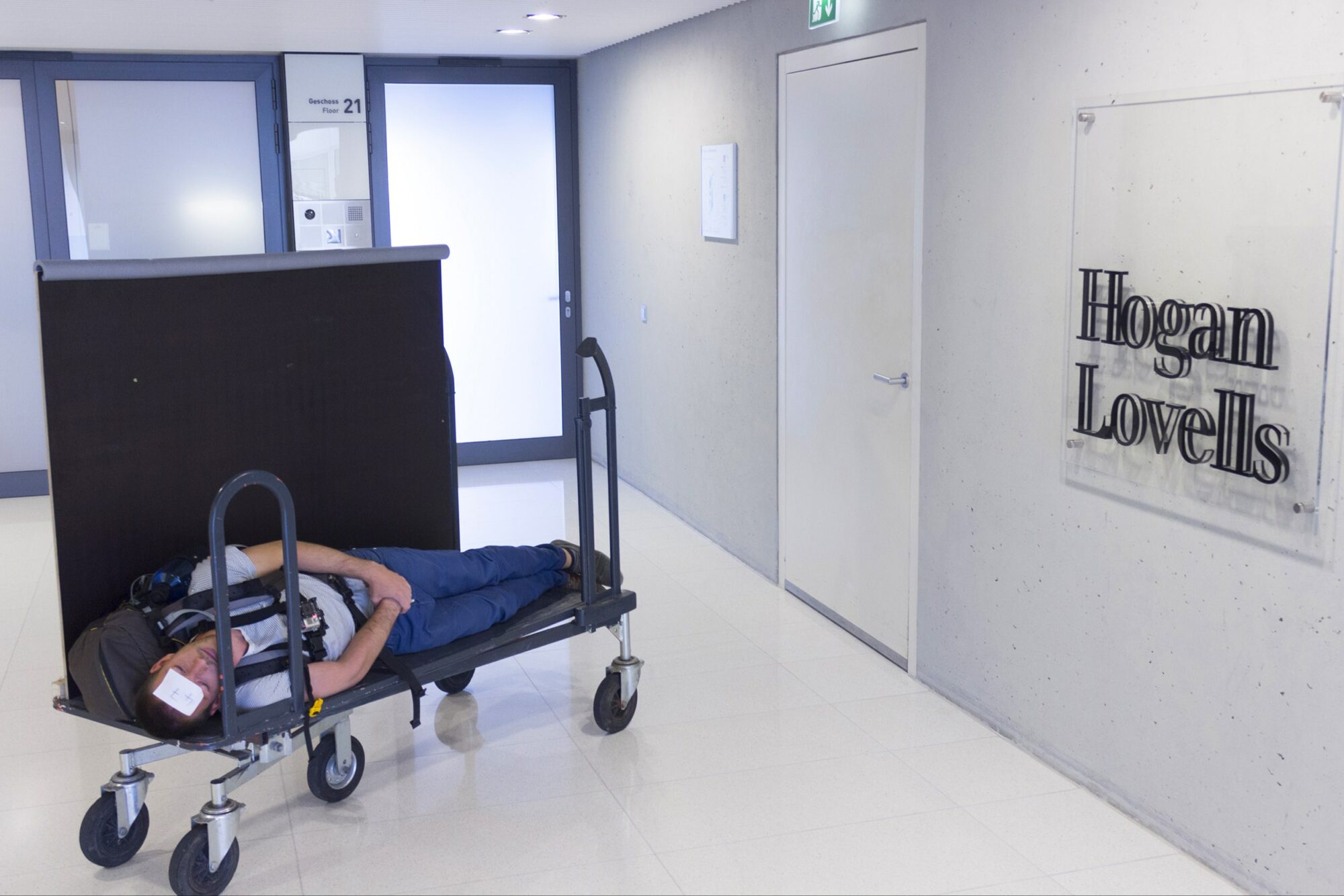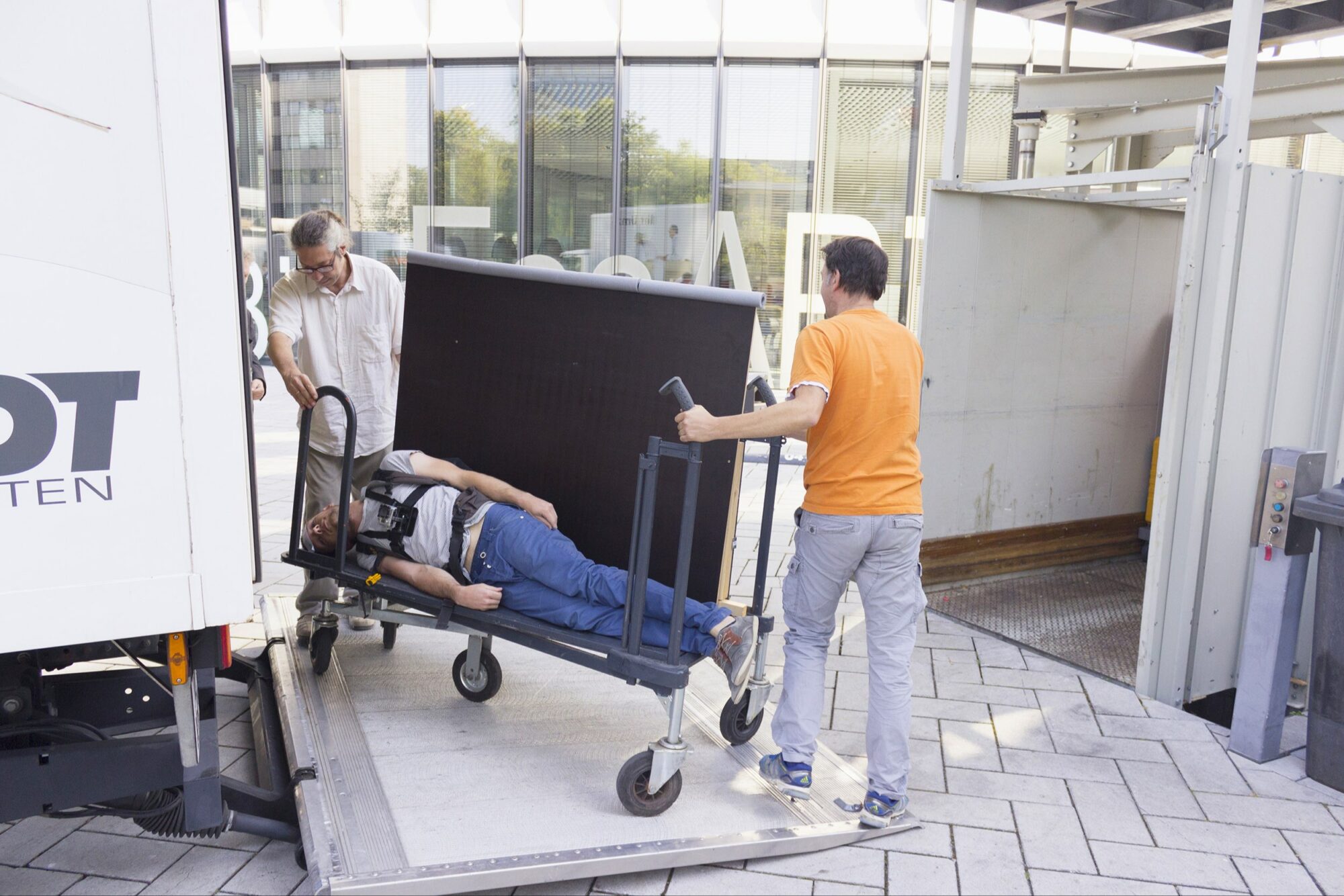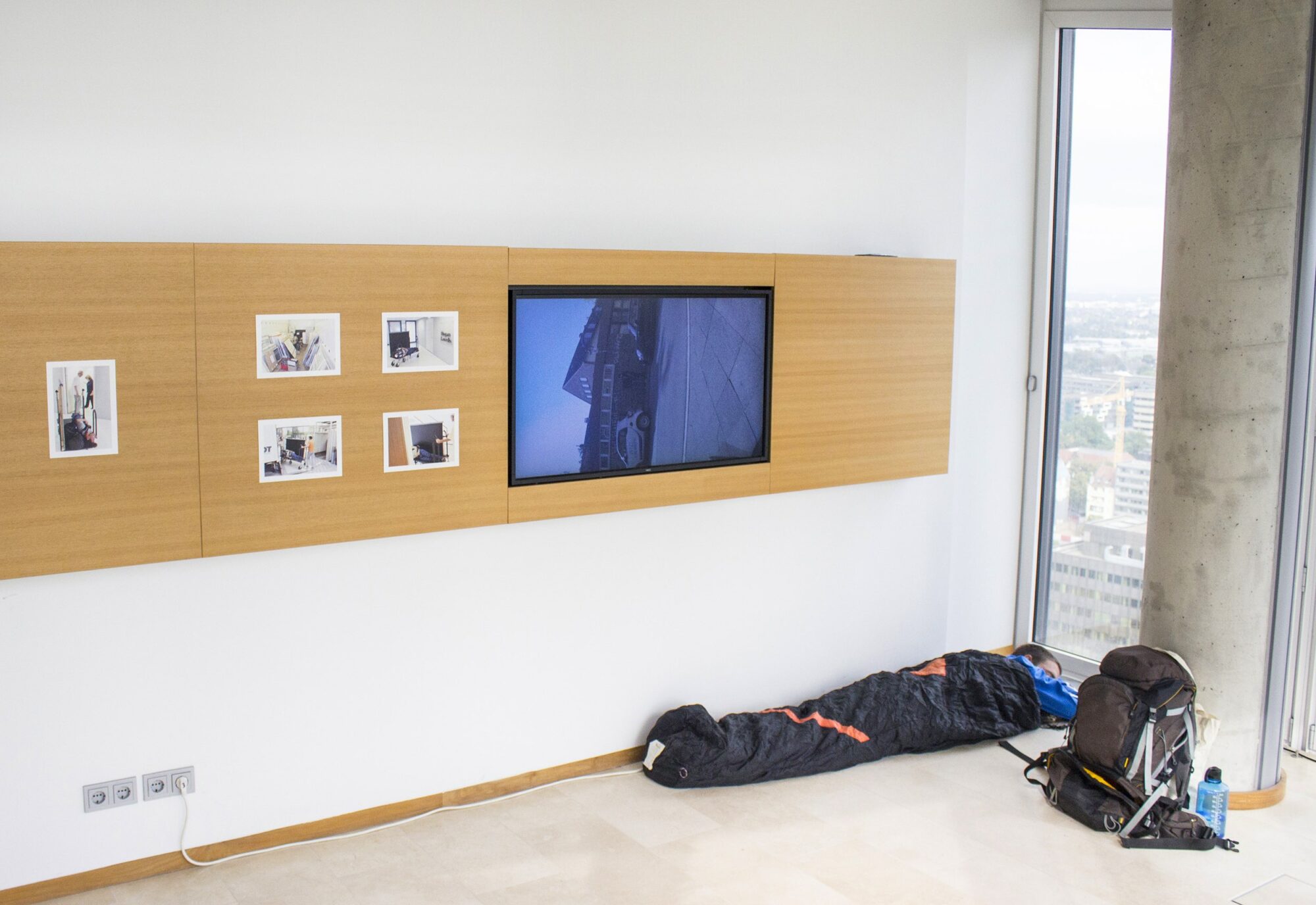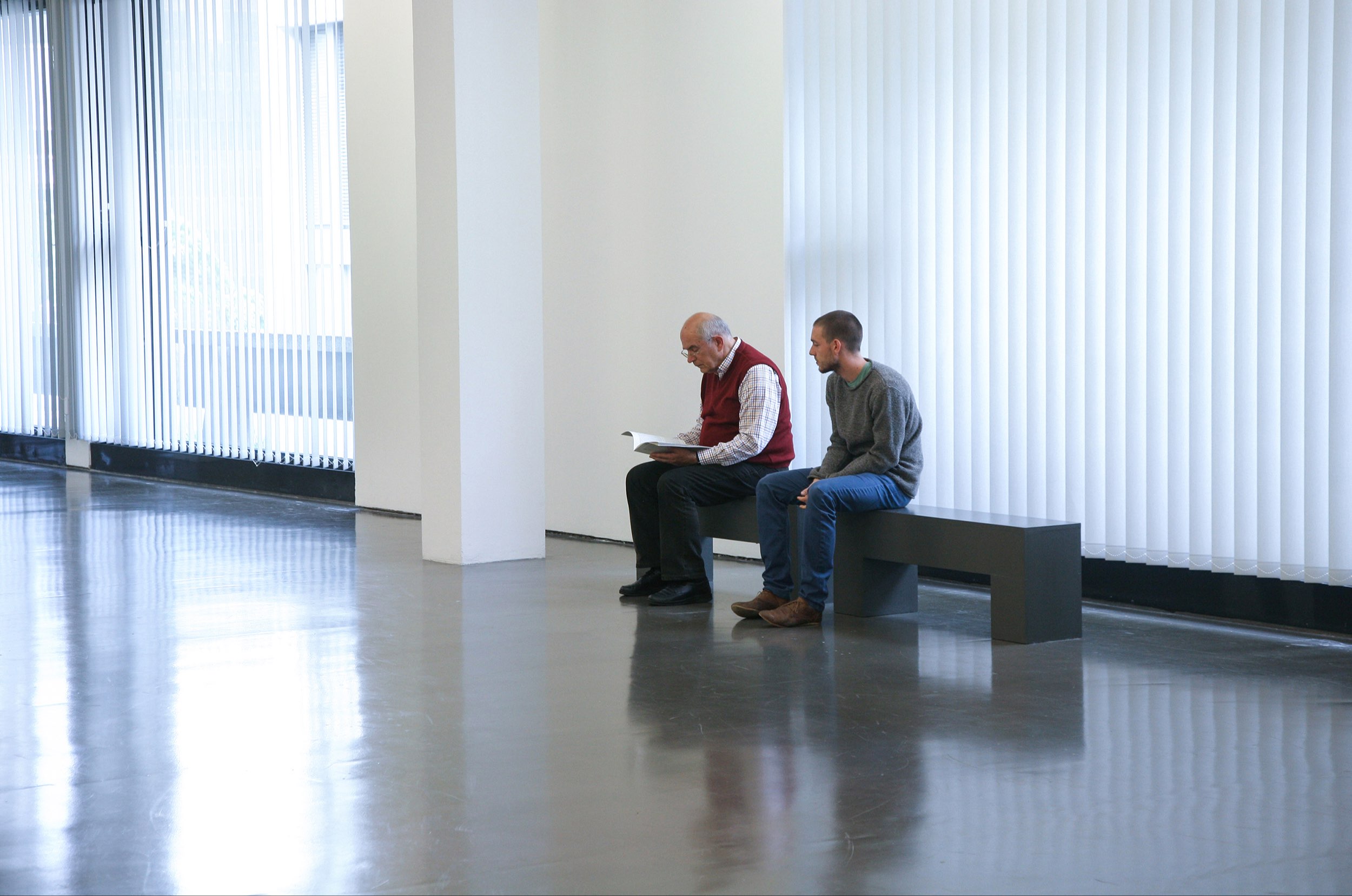Anlieger / residents, Abteiberg Museum Mönchengladbach
Live-Action in collaboration with Marco Biermann and different perfomers, 3-channel video and 2-channel sound live collage, Von den Strömen der Stadt, Museum Abteiberg, Mönchengladbach, 2016
read more ⟶
“Resident” (Anlieger) is a collection of scenes from the neighborhood. There are a total of five channels from which image and sound come: three cameras and two microphones. The recordings are separated from each other, they show a juxtaposition of three visual and two acoustic projections. In the museum space that performs this work, three projectors are set up on stands and two pairs of loudspeakers, surrounded by a large amount of cables.
The mountains of black cables, in times of wireless, battery- and electric-wave-supported media a completely atavistic and bulky circumstantiality of this installation, are the connection between inside and outside, museum and neighbourhood. Five performers have moved parallel with wired devices into the surrounding houses, out of the museum pulling the cables behind them like an umbilical cord. Or – more aptly – like a trunk that expands eyes and ears and now causes them to enter these places, to push themselves into them, over walls, behind walls.
Similar to their co-produced performances, Tomas Kleiner and Marco Biermann are also concerned here with a project of the slightest possible influence on everyday life, a video-sound performance that visibly publishes intimacy and privacy, but leaves it in this place and keeps it in a protective way.
The production of “Anlieger” has many possible references. Psychologically, the view goes from self to others, from the long scenes in Bruce Nauman’s “Studio” to the long scenes of every household. Didactically, the principle of small/beer man pushes down from the stage. This seems very acute and present, away from the theatrical, from that stage that is omnipresent today, inevitably and spontaneously built up with every camera, every smartphone snapshot, every minute of reality TV. The definition of artistic performance, since the characters of Andrea Fraser or Tino Sehgal also a didactic question for the examination of contemporary society, is once again newly set in these works. In their performances, Kleiner and Biermann invaded everyday life and pushed themselves into it almost unnoticed. They produce almost invisible performances of the private (“Kleidertausch”, 2015) and images of the almost invisible because private. These visual and acoustic images, which penetrate from one neighborhood room into another, for example in “Anlieger”, are ultimately portrait and genre by other means, reformulated and in an interesting way close to colleagues like Wolfgang Tillman, i.e. to ‘straight photography’.
Text excerpt by Susanne Titz, 2016
More information and press articles:
RP Online – Hallo Nachbarn! / PDF ⟶
Museum Abteiberg – Von den Strömen der Stadt / PDF ⟶
Wahrscheinlich sitzend / probably sitting, Hogan Lovells, Düsseldorf
5 days of live action in collaboration with Marco Biermann, action-cam video and photos, Hogan Lovells art award announcement, Kunstakademie Düsseldorf / Hogan Lovells, 2016
read more ⟶
In the context of the call for entries for the sponsorship award of the law firm “Hogan Lovells”, Tomas Kleiner adapted to the technical limitations of the works to be submitted (150x70x70cm and max 80kg) and, due to the low maximum height, submitted as a “probably seated sculpture”.
The occasion for this action was, besides the humorous criticism of the untimely strict separation between the different artistic media, also the performaitve interest in taking the perspective of a sculpture.
The action makes the entire procedure of a competition visible from the perspective of the submitted art object, passing through the various stages of such a procedure: handing in the work at the Düsseldorf Art Academy, storage in the Academy’s office, transport from the Academy to the office, storage in the office, setting up and curating the exhibition, jury meeting and opening of the exhibition.
The performative intervention thus questions the everyday handling of art objects and the handling of artistic-performative assertions such as “this is not a performance – I am a sculpture”, playfully undermines the conventional definition of traditional art forms and renegotiates them in a concrete case – in places where one might not expect it – as the public relations officer of the academy in one’s own office, as an employee of an art shipping company during transport, as the security officer of a law firm, as the curator of a call for tenders, as the construction team of an exhibition, as members of the jury, as a waitress at the reception.
An interview in full length lead by Prof. Robert Fleck you will find on: www.kleinerbiermann.com
attention piece, Kunsthalle Düsseldorf
live action in collaboration with Marco Biermann, during several days in the entire exhibition space, time based academy, Kunsthalle Düsseldorf, 2015
read more ⟶
Two unannounced actors explicitly behave towards the museum visitors in the rooms of the Düsseldorfer Kunsthalle. However, the intervention that they perform is reduced to a minimum of perceptibility, because the experimental framework of the actors is to move exactly on the border of visibility.
The means of design here are everyday, trivial, performative behaviours whose shifting here is particularly related to the given behavioural patterns of the museum space. The extremely sensitized attention structure created by the museum frame allows the attentiveness of the visitors to be directed without great gestures:
A minimally more penetrating gaze than is customary for the place – even if it is only from a distance, a minimally more intense proximity to the visitor, whether for a longer period of time in the more distant surroundings or for a brief moment strangely close – and the visitor is already sensitized to a possible event.
What happens then, however, is apparently nothing more. –
As soon as the actors have the feeling of being on the borderline, of having gained the attention of the visitor and thus a kind of stage, the structure is immediately veiled again. The actor disguises himself again as a like-minded museum visitor, in which he once again devotes himself conspicuously to the exhibits, continues to walk, and does not enter into any further encounters with the museum visitor.
Thus the visitor is left alone with whether something has taken place, should have taken place, or could have taken place.

